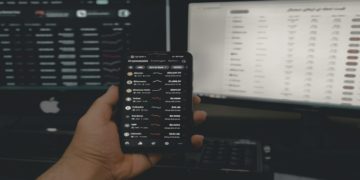Legacy ITSM systems were designed for a different era—one where infrastructure was static, incidents were fewer, and response times were less critical. But today’s enterprise environments are fast paced, distributed, and increasingly complex. As IT teams struggle with slow resolution times, poor visibility, and fragmented workflows, many organizations are turning to modern incident management tools as a more scalable and intelligent alternative.
The transition is being driven by clear business and operational needs: smoother integrations, improved automation, and real-time insights powered by AIOps for incident management. Add to this the rising cost of maintaining legacy ITSM, increasing security vulnerabilities in legacy systems—some even exposed through the dark web—and persistent ITSM integration challenges, and the case for modernization becomes unavoidable. For many, moving to cloud-based ITSM solutions—and in many cases, planning a full ServiceNow migration—is no longer optional, but essential.
In this article, we delve into why enterprises are replacing outdated systems with modern solutions, what benefits they’re realizing, and how technologies like cloud-based ITSM platforms and AIOps are reshaping incident response.
The Downside of Legacy ITSM Systems
For years, businesses relied on Legacy ITSM Systems to manage IT incidents, track service requests, and ensure smooth operations. However, as technology evolves and businesses scale, the cracks in these traditional setups have become hard to ignore.
Key Challenges with Legacy Systems:
- Legacy IT System Risks: Outdated software and hardware are often incompatible with newer tools and protocols, exposing organizations to reliability and compliance issues.
- Data Silos in ITSM: Traditional systems often store information in disconnected repositories, making it difficult for teams to collaborate effectively or access real-time data.
- ITSM Integration Challenges: Adding new services or integrating with third-party tools is often cumbersome and resource-intensive.
- Security Vulnerabilities in Legacy Systems: Old platforms are more susceptible to breaches and malware attacks due to a lack of regular updates and support.
- Cost of Maintaining Legacy ITSM: Keeping these systems up and running incurs high maintenance costs, licensing fees, and specialized staffing requirements.
Why Modern Incident Management Tools Are Gaining Ground
Modern incident management tools provide intelligent, scalable, and proactive alternatives. Built for agility, these platforms enable IT teams to detect, respond to, and prevent incidents more effectively.
Key Benefits of Modern Incident Management:
Cloud-Based ITSM Solutions: Provide global visibility and real-time response capabilities.
AIOps for Incident Management: Leverages machine learning to prioritise, correlate, and automate incident response.
Seamless Integrations: With chat platforms, monitoring tools, and CI/CD pipelines, incident information flows automatically across the stack.
Reduced MTTR: Intelligent alerting and automated root cause analysis dramatically shorten resolution times.
Enhanced Collaboration: Centralised war rooms, on-call schedules, and automated notifications allow cross-functional teams to manage incidents cohesively.
Real-World Impacts
Companies that have adopted Modern Incident Management Tools often report measurable improvements:
- Reduction in incident response time.
- Improved uptime and customer satisfaction.
- Greater visibility into infrastructure and application performance.
- Lower total cost of ownership compared to Legacy ITSM Systems.
Overcoming Transition Barriers
While the shift is necessary, moving from Legacy ITSM Systems to Modern Incident Management Tools is not without its hurdles. Common challenges include:
- Resistance to change from internal teams.
- Initial costs of transition.
- Complexities involved in data migration and system reconfiguration.
However, most organizations find that these are short-term obstacles with long-term payoffs. Modern platforms often include migration tools and vendor support to ease the process.
Addressing Compliance and Security
Security Vulnerabilities in Legacy Systems are a growing concern, especially in regulated industries. Modern tools, on the other hand, offer:
- Continuous compliance tracking.
- Real-time threat detection.
- Secure access controls and audit trails.
This shift not only strengthens an organization’s security posture but also helps in aligning with industry regulations and best practices.
The Role of AIOps in Modern Incident Management
AIOps for Incident Management brings machine learning, big data, and analytics into the heart of IT operations. These features help in:
- Identifying patterns and anomalies.
- Predicting incidents before they occur.
- Automating routine tasks and escalations.
By incorporating AIOps, Modern Incident Management Tools go beyond reactive support to proactive service assurance.
Simplifying ITSM Integration Challenges
Modern platforms address ITSM Integration Challenges by offering:
- Open APIs for easy connectivity.
- Pre-built connectors for popular tools.
- Low-code/no-code customization for faster deployments.
This simplifies the IT landscape, promotes collaboration, and enables faster service delivery.
Avoiding Data Silos in ITSM
Modern tools eliminate Data Silos in ITSM by consolidating data into unified dashboards. This ensures:
- Better visibility for decision-makers.
- Cross-functional alignment.
- Improved incident tracking and reporting.
Cost Considerations
While modern solutions may seem costly at first glance, they often result in a lower TCO by reducing the Cost of Maintaining Legacy ITSM. These savings come from:
- Reduced downtime.
- Lower staffing requirements.
- Automation of repetitive tasks.
- Pay-as-you-go pricing models with Cloud-Based ITSM Solutions.
Conclusion
The shift from Legacy ITSM Systems to Modern Incident Management Tools is no longer just a tech upgrade—it’s a strategic business decision. With the rise of Cloud-Based ITSM Solutions, AIOps for Incident Management, and increasing ServiceNow Migration, organizations are moving toward more intelligent, efficient, and secure IT operations.
By leaving behind the Legacy IT System Risks, overcoming ITSM Integration Challenges, and addressing Data Silos in ITSM, enterprises position themselves for future growth, resilience, and digital success. Now is the time to embrace the modern, leave behind the outdated, and ensure your ITSM approach is built for tomorrow.











































































